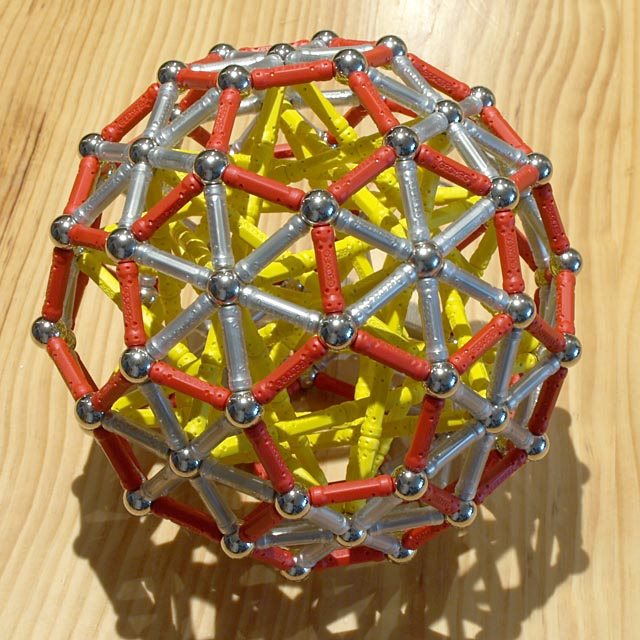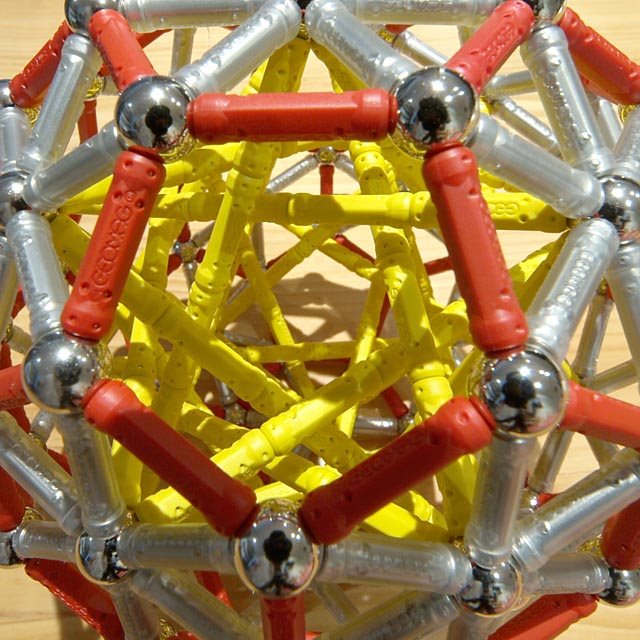Compound of five tetrahedra
The vertices of five interlaced regular tetrahedra placed as shown in the following picture form a regular dodecahedron:
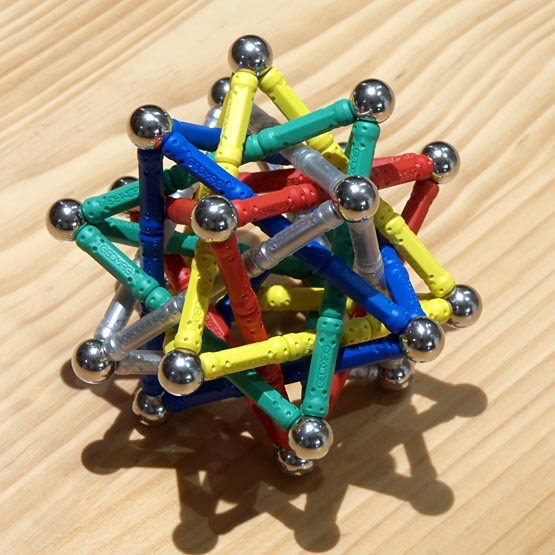
Compound of five tetrahedra, view 1
110 pieces: 20 balls, 90 rods (595.00 g)
|
Having the edges of the tetrahedra of length three, the distance between contiguous vertices of the dodecahedron is quite close to the length of a rod. This fact can be put to good use when building the object, as we can attach our first ten rods (the first angle of each tetrahedron) to the lower pentagon of the dodecahedron; the 10-rod, zigzag «equator» of the dodecahedron will be a very important intermediate support, and so on. All these supports will necessarily be temporary, as there is not enough space at the vertices to build simultaneously the tetrahedra and the dodecahedron, besides the fact that the lengths involved are close but not equal. Without these or some similar supports it is not possible to build this object, as it does not get any stability until it is nearly finished.
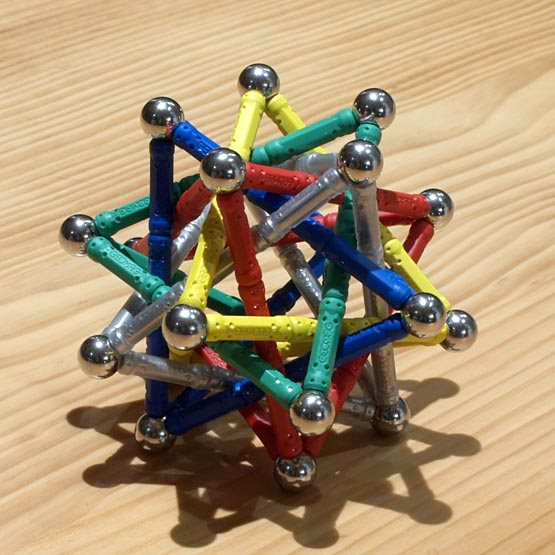
Compound of five tetrahedra, view 2
|
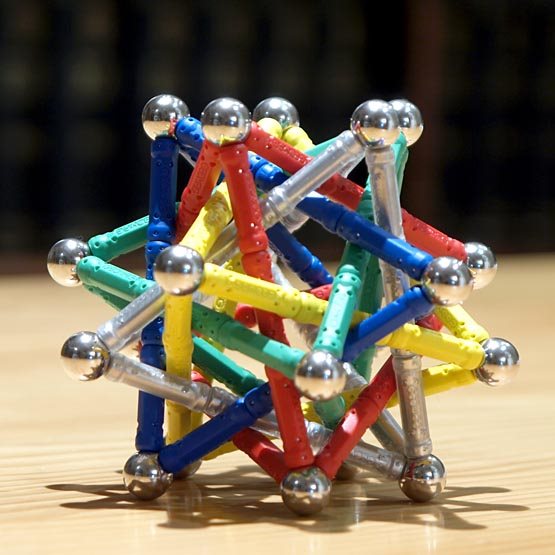
Compound of five tetrahedra, view 3
|
Building 12 pentagonal pyramids on top of the faces of the imaginary dodecahedron that we used in the previous construction, but still not including the edges of the dodecahedron itself, results in an object very close to a
rhombic triacontahedron. The dimensions of the rhombuses in this object are very near to the theoretical ones, but our rhombuses are not really planar, so the object doesn't qualify even as a polyhedron. In any case, this object, found by
Herwig Van Marck (Amafirlian), is a very good approximation, and, if you begin by building the external object first, it is also a very handy method (better in fact than the one outlined above) to build the five tetrahedra compound.
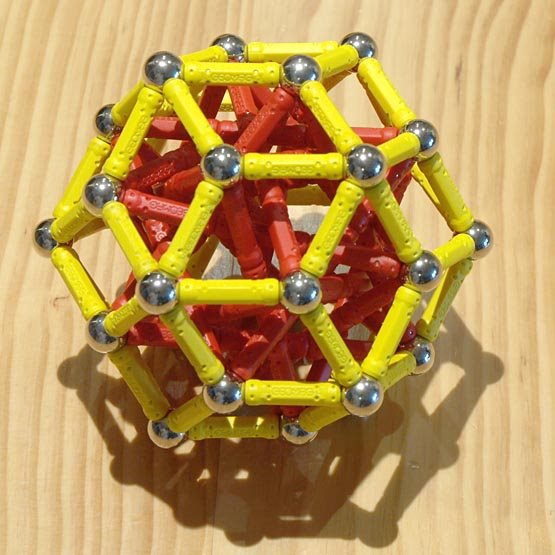
The rhombic triacontahedron around five tetrahedra, view 1
182 pieces: 32 balls, 150 rods (980.20 g)
|
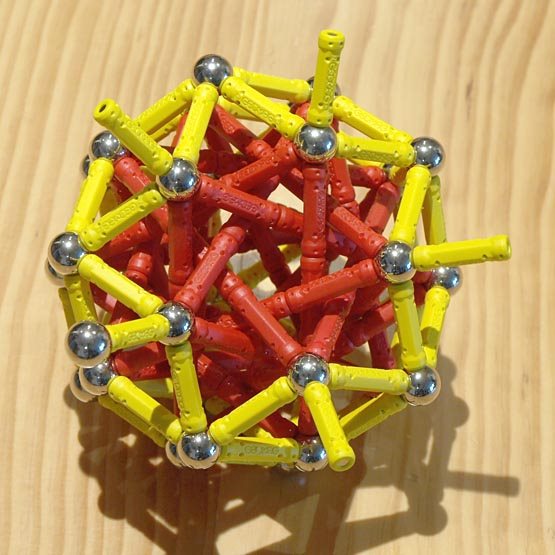
The rhombic triacontahedron around five tetrahedra, view 2
|
Finally, by using five rods for the edges of the five tetrahedra, the 20 vertices of the corresponding dodecahedron are very close to the positions of the centerpoints of the 20 hexagons in a truncated regular icosahedron with edge unity. This gives us a new and smarter, but heavier, way to build a truncated regular icosahedron without panels. In fact, the five-rod edges of the tetrahedra are about 2.11% too long, but the difference is easily absorbed by the hexagons. Again, this object was found by
Herwig Van Marck.
